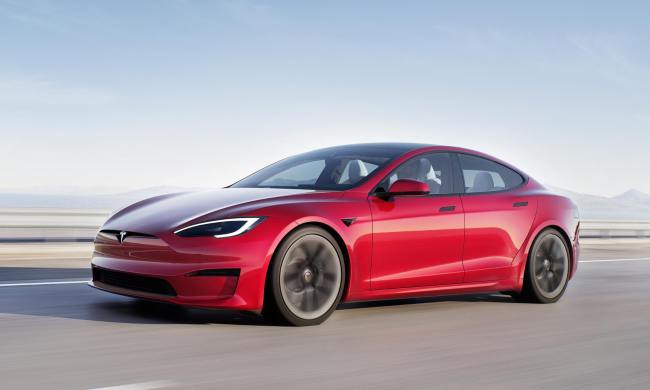Digital Trends may earn a commission when you buy through links on our site. Why trust us?
By Nick Godt Published November 21, 2024 6:23 AM
 Image used with permission by copyright holder
Image used with permission by copyright holder
Tesla “has been very clear the future is autonomous”, CEO Elon Musk said in October, shortly after unveiling the Cybercab, Tesla’s self-driving robotaxi.
It now seems that Musk, who was recently nominated to lead a newly-created ‘Department of Government Efficiency’, is sharing his crystal ball with the incoming Trump administration.
The Trump transition team plans to make a federal framework for self-driving vehicles a top priority for the Transportation Department, according to a Bloomberg report, citing people familiar with the matter.
“This would be a huge step forward in easing U.S. rules for self driving cars and be a significant tailwind for Tesla’s autonomous and AI vision heading into 2025,” says Wedbush analyst Dan Ives.
New federal rules under discussion would not only ease regulations around self-driving vehicles, but also raise the cap on the number of autonomous vehicles allowed on public roads, according to the report.
Under current rules, each manufacturer is allowed to deploy up to 2,500 self-driving vehicles per year in the U.S. Previous efforts to allow up to 100,000 vehicles have so far failed.
Regulators, such as the National Highway Traffic Safety Administration (NHTSA), have so far taken a cautious approach to the deployment of autonomous vehicles and their deployment as robotaxi services.
General Motors’ backed Cruise was forced to suspend operations last year following a fatal collision. Earlier this year, NHTSA also launched an investigation into Alphabet-owned Waymo following multiple incidents.
Waymo currently operates the only functioning robotaxi service in the U.S., with a fleet of about 700 self-driving vehicles on the road in Phoenix, Los Angeles and San Francisco.
While Tesla has already held discussions with ride-hailing company Uber for an upcoming robotaxi service, the company’s full self-driving software (FSD) — as currently used in regular Tesla models — has also come under heavy scrutiny by regulators.
Last month, NHTSA opened an investigation into 2.4 million Tesla vehicles equipped with FSD software, following three reported collisions and a fatal crash. The regulator also told Tesla to stop making misleading claims about FSD’s autonomous capability and reaffirm that the software provides only a driver assist/support system.

Nick Godt has covered global business news on three continents for over 25 years.
Is Tesla Full Self-Driving worth it?

While many electric cars offer advanced driver assistance tech these days, most of those boil down to a few different technologies working together -- like lane-keeping and adaptive cruise control. Generally, they work quite well. Together, they can essentially allow a car to drive itself on the highway under the right conditions. But companies are also working on the next generation of self-driving cars, and there's been no company more public about this than Tesla, which offers its Full Self-Driving tech.
But while Tesla Full Self-Driving is available to customers, it's far from free. At the time of this writing, Tesla offered Full Self-Driving through a one-time payment of a hefty $15,000, or as a $200-per-month subscription. Neither of those is cheap, and as such you might be wondering whether or not it's worth the money.
Read more
Tesla hopes full self-driving beta will be out globally by the end of 2022

At the Tesla AI Day 2022 event, the electric car maker revealed some key statistics about the Full Self Driving (FSD) tech that is currently still in the beta testing phase. The company divulged that the number of FSD beta testers has gone up from 2,000 last year to roughly 1,60,000 users in 2022, despite a few regulatory hiccups and incidents that raised questions about its safety.
Tesla still hasn’t provided a timeline for when the FSD package will formally exit the beta phase, but it doesn’t seem too far off. In a TED interview this year, Musk claimed that the FSD system, which now costs $15,000, will most likely be out by the end of 2022 for all customers. There are also plans for a global rollout by the end of this year, pending regulatory approval, of course.
Read more
Officers confused as they pull over an empty self-driving car

In what appears to be the first incident of its kind, police officers recently pulled over a self-driving car with no one inside it.
The incident, which took place on a street in San Francisco earlier this month, was caught on video by a passing pedestrian. It shows several traffic cops pondering about how to handle the incident after stopping the vehicle for failing to have its front lights on while driving at night.
Read more













)





 English (US) ·
English (US) ·